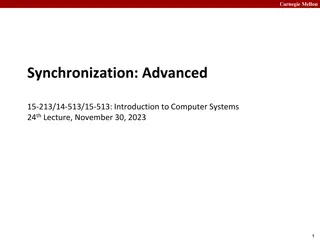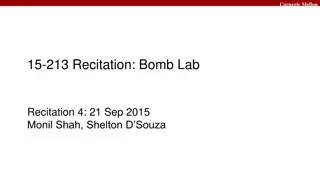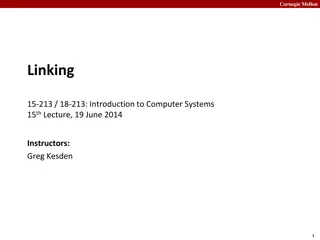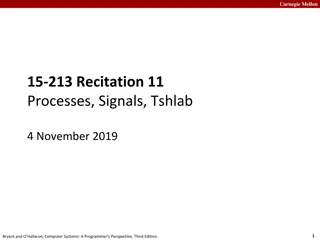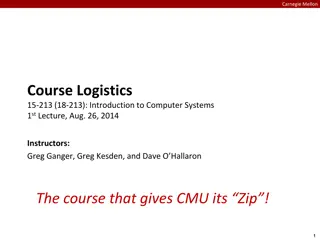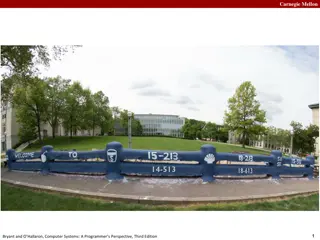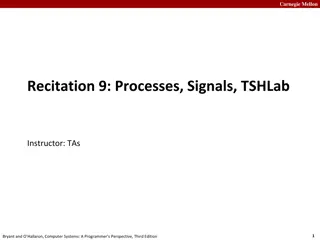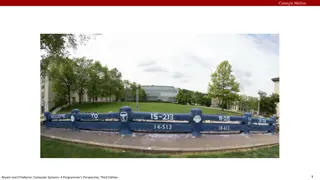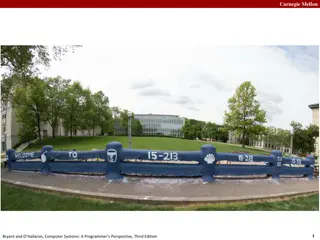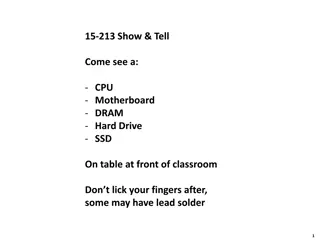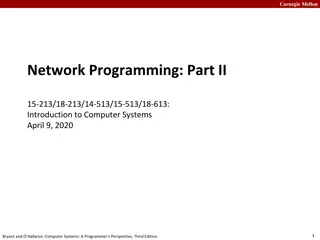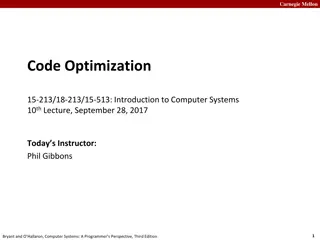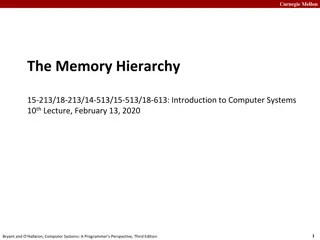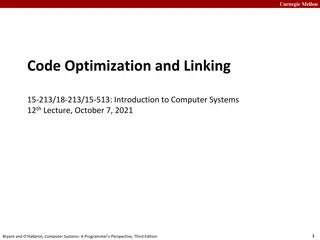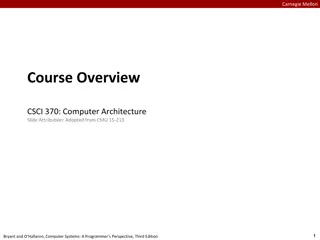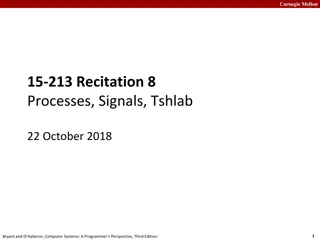Carnegie Mellon System-Level I/O: Introduction to Computer Systems
This content introduces the fundamentals of computer systems with a focus on system-level I/O at Carnegie Mellon University. Topics covered include file operations, standard I/O, Unix I/O overview, and the representation of I/O devices as files. The content explores the concept of files as sequences of bytes and highlights the exposure of kernel data structures as files in Unix systems. Additionally, it discusses the significance of different I/O operations and the relationship between I/O devices and files in the context of computer systems.
Download Presentation

Please find below an Image/Link to download the presentation.
The content on the website is provided AS IS for your information and personal use only. It may not be sold, licensed, or shared on other websites without obtaining consent from the author.If you encounter any issues during the download, it is possible that the publisher has removed the file from their server.
You are allowed to download the files provided on this website for personal or commercial use, subject to the condition that they are used lawfully. All files are the property of their respective owners.
The content on the website is provided AS IS for your information and personal use only. It may not be sold, licensed, or shared on other websites without obtaining consent from the author.
E N D
Presentation Transcript
? Intelligent Signal Processing Test Angelo Ciaramella
Question 26 Multimedia Networking Question Error concealment schemes attempt to produce a replacement for a lost packet that is different to the original attempt to produce a new packet for replacing the original attempt to produce a replacement for a lost packet that is similar to the original ISP Verification tests
Introduction Internet telephony commonly called Voice-over-IP (VoIP) Limitations IP provides best-effort service delay bound percentage of packets lost Scenario sender generates bytes at a rate of 8,000 bytes per second every 20 msecs the sender gathers these bytes into a chunk a chunk and a special header are encapsulated in a UDP segment, via a call to the socket interface the number of bytes in a chunk is 20 msecs a UDP segment is sent every 20 msecs the receiver can simply play back each chunk as soon as it arrives ISP Verification tests
Packet loss UDP segment is encapsulated in an IP datagram datagram wanders through the network it passes through router buffers It is possible that one or more of the buffers in the path from sender to receiver is full IP datagram may be discarded Loss elimination sending the packets over TCP unacceptable for conversational real-time audio applications such as VoIP UDP is used by Skype unless a user is behind a NAT or firewall that blocks UDP segments (in which case TCP is used) ISP Verification tests
Packet loss Packet loss ratios between 1 and 20 percent can be tolerated packet loss concealment packet loss exceeds 10 to 20 percent (for example, on a wireless link no acceptable audio quality ISP Verification tests
End to end delay End-to-end delay accumulation of transmission, processing, and queuing delays VoIP end-to-end delays smaller than 150 msecs are not perceived by a human listener delays between 150 and 400 msecs can be acceptable but are not ideal delays exceeding 400 msecs can seriously hinder the interactivity in voice conversations ISP Verification tests
Packet jitter Packet jitter varying delays the time from when a packet is generated at the source until it is received at the receiver can fluctuate from packet to packet e.g., different queues for different rooters ISP Verification tests
Removing jitter packets loss packets generated packets received playout schedule p' - r playout schedule p - r ISP Verification tests time r p' p Fixed playout delay
Adaptive Playout Delay Estimate of the average network delay ISP Verification tests Estimate of the average deviation of the network delay costant 4 Playout of the packets
Forward Error Correction ISP Verification tests FEC - FEC mechanism is to send a lower-resolution audio stream as the redundant information
Interleaving ISP Verification tests Sending interleaved audio
Error Concealment Error concealment schemes attempt to produce a replacement for a lost packet that is similar to the original the simplest form of receiver-based recovery is packet repetition methodology based on compressive sensing ISP Verification tests
References Material Slides Video Lessons Books Computer Networking: A Top-Down Approach, J. F. Kurose, K. W. Ross, Pearson, 6 edition, 2013 ISP Verification tests


